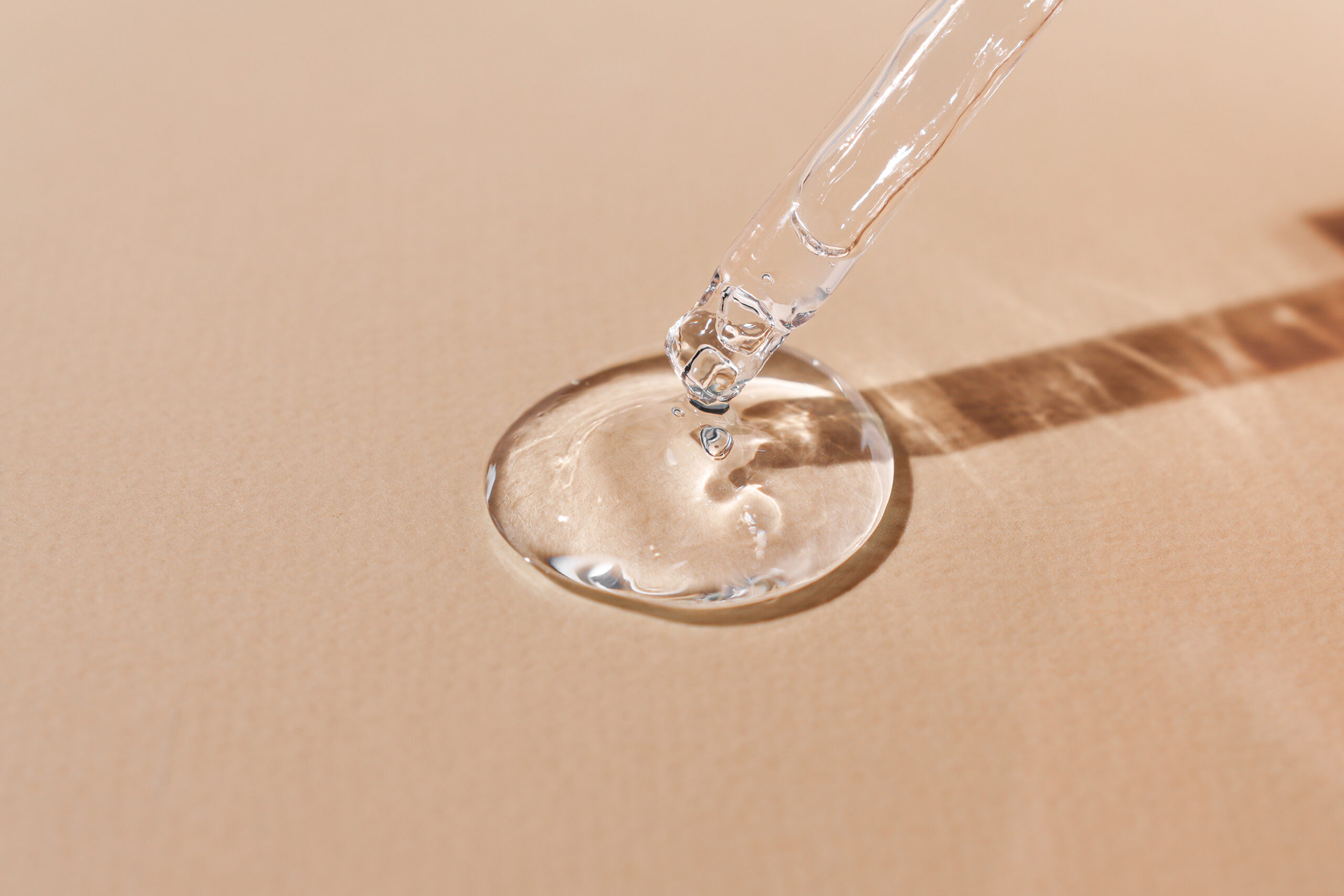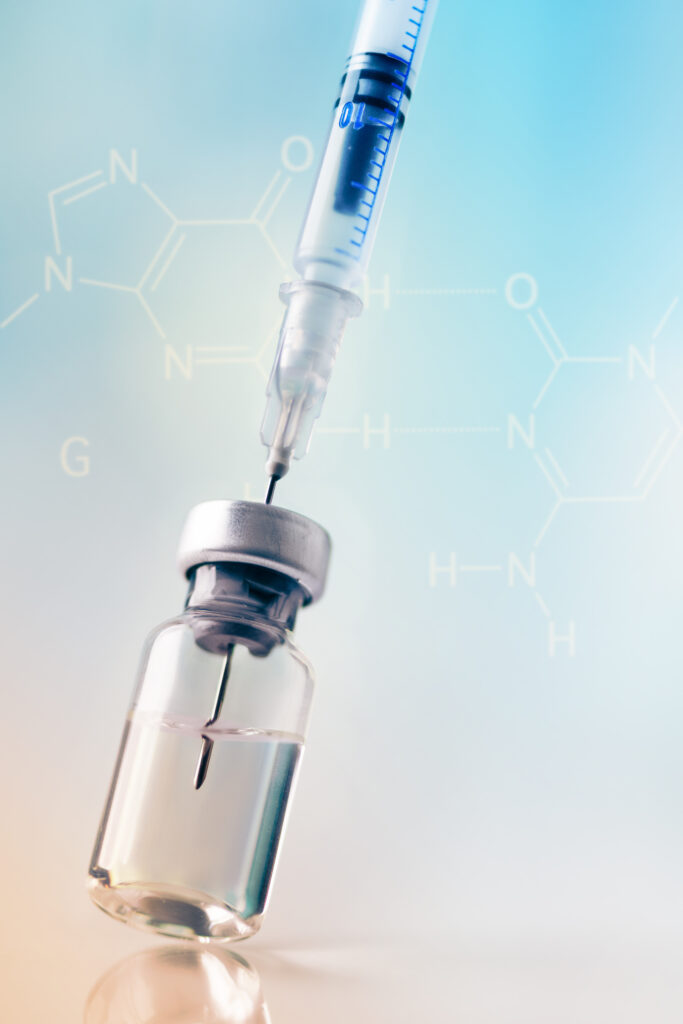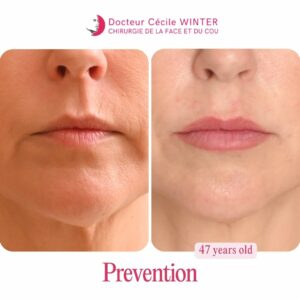Many of us tend to segment the face into the upper, middle, and lower thirds, thus separating the different emotional zones of the face.
While facial treatments are based on this fragmentation, the result in terms of charm (perceived beauty) can be altered, leading to a discordance between the emotional messages conveyed by the eyes and the smile.
A deeper anatomical understanding, more attuned to the aging process, allows us to divide the face into two zones. The support zone is predominantly lateral, while the central zone can be defined as the "triangle of emotions."
Reinforcing the support zone with hyaluronic acid injections helps maintain the emotional zone by injecting minimally, preserving natural charm, function, and emotions.
Furthermore, overcorrection of these zones transforms a person, inhibiting the transmission of emotions and impairing the face's essential functions. Similar to how aging affects respiratory, feeding, and visual functions, an overload of hyaluronic acid or botulinum toxin will be functionally detrimental.
It is essential, though sometimes challenging, to avoid fixating on a detail but rather observe the face and neck as a whole. Discussing together, getting to know each other are also indispensable phases for comprehensive care and achieving the most natural result possible.
In the minds of many, the treatment of the upper part of the face is done with Botox, and the treatment of the lower part of the face is done with hyaluronic acid.
Indeed, Botox smoothes fine lines around the eyes, and hyaluronic acid restores lost volume to the lips.
Obviously, aesthetic medicine treatments should not be reduced to these two treatments, or we would all be expressionless clones with an ultra-smooth forehead and large mouths!
The complexity of facial anatomy, with muscular and fatty zones from the hairline to the clavicles, and an understanding of aging, allow us to adapt hyaluronic acid and Botox treatments to all facial and neck areas to achieve the most natural results.
To ensure everyone understands and knows the most suitable treatment for their face, explanatory videos zone by zone are available on the website, YouTube, Facebook, Instagram, and TikTok.
Hyaluronic acid is a large sugar molecule naturally present in the human body. This molecule manages tissue hydration, volume, and support.
We naturally lose it over time. Therefore, hyaluronic acid injections help restore facial support and skin hydration.
Nowadays, thanks to scientific advances, there are multiple types of hyaluronic acids that can adapt to each facial zone and individual.
The main contraindications for hyaluronic acid include infection, autoimmune diseases in flare-ups, pregnancy, and breastfeeding. Only hyaluronic acids from top brands, guaranteed by serious clinical studies, are used in the clinic.
The duration of hyaluronic acid treatment varies between 8 months and 2 years depending on individuals, injected zones, and mechanical stresses on these zones such as repetitive movements or prolonged pressure.


Botulinum toxin is a medication used since the 1970s. It was initially indicated for childhood strabismus to relax the eye muscles. It has been used since the 1990s in facial aesthetics.
Contraindications include neuromuscular junction diseases, pregnancy, and breastfeeding.
Botulinum toxin, also called Botox, is a dose-dependent and location-dependent localized muscle relaxant. There are no direct side effects related to the molecule but rather related to product diffusion into a non-targeted muscle initially.
That's why patients are advised not to engage in sports or any activity that would make the head red and swollen for 5 days, the time it takes for the treatment to take effect.
The treatment takes about fifteen days to settle, remains stable for a period of 2 to 3 months, then gradually decreases over 2 months to return to the initial state after 5 to 6 months. There are different types of more or less blocking toxins that can adapt to each individual.










Correction of Support Loss in the Lower Third of the Face
This is a 47-year-old patient with a lack of support in the lower third of the face, particularly in the chin and the lower corners of the mouth. These losses of support, exacerbated by time, lead to hyper-contraction of the peri-oral muscles, particularly the orbicularis oris muscle, which pinches the mouth, and the mentalis muscle, which rolls the chin upward and creates a crease between the mouth and the chin. Additionally, the depressor muscles of the outer corners (ends of the lips), as their name suggests, pull the corners of the mouth downward, creating marionette lines.
Providing support in these areas with hyaluronic acid, combined with relaxing these areas with slight injections of botulinum toxin, helps restore a more aesthetic and functional peri-oral region. The goal of these injections, as usual, is prevention.



Prevention of Morphological and Functional Facial Changes
Beautiful 38-year-old patient wishing to prevent morphological and functional changes in her face. She shows a lack of support under the lower eyelid as well as around the mouth. There is also early lateral eyelid closure and hypercontractions of the peri-orbital and peri-oral muscles. Preventive measures were taken using hyaluronic acid to support the under-eye area, the nasolabial folds, and the marionette lines, as well as botulinum toxin to prevent peri-orificial hypercontractions, thereby opening up the upper gaze and horizontalizing the mouth. Botulinum toxin injections should be administered twice a year for optimal results, while hyaluronic acid injections generally last between one and a half to two years. Radiant 46-year-old patient



Functional and Morphological Prevention of the Central and Lower Face
A 37-year-old patient presenting with hypercontraction of the chin, lip pursing, and insufficient support of the upper lip. Support and subtle rehydration were provided using hyaluronic acid discreetly applied to the lips and marionette lines. Relaxation was achieved with botulinum toxins on the chin muscles and the depressors of the corners of the mouth. The goal here is to provide functional and morphological prevention of the central and lower part of the face.


Facial Aesthetic Prevention
Prevention in facial aesthetics involves a deeper anatomical perspective that is more adapted to the passage of time. It is essential, and sometimes challenging, to avoid focusing on a single detail and instead observe the face and neck as a whole. Thorough discussions and mutual understanding are also crucial phases for comprehensive care, aiming to achieve the most natural result possible.
The prevention strategy implemented with this patient over the years includes:
- Relaxing certain muscles with botulinum toxin, especially the masticatory muscles and certain depressor muscles of the face and neck.
- Supporting areas of weakness such as dark circles and areas of skin fragility like the nasolabial folds.
- Applying sunscreen daily.
- Avoiding intervention on areas of strength, such as well-defined cheekbones.



Rhinoplasty for Men
Rhinoplasty is a solution for men who wish to correct defects in their nose, whether congenital or post-traumatic, with or without breathing difficulties. Preservation anatomical rhinoplasty is a minimally invasive, well-mastered, and reliable technique. It is tailored to each patient to achieve an optimal aesthetic, functional, and personalized result. The result shown here is observed after one and a half years.

Rebalancing Lips with Hyaluronic Acid Injections
In some patients, there is an imbalance between the upper and lower lip ratios. It is possible to add more volume to one lip compared to the other while respecting the natural shape of the lips.
For this young patient, the goal was to achieve a "natural" aesthetic result by adding more volume to the upper lip while hydrating both the upper and lower lips.
Please note that immediately after the procedure, the lips may be slightly swollen and small bruises may appear. The final result can be evaluated after two weeks.




Facial Rejuvenation with Hyaluronic Acid Injections
Surgery is not always necessary to restore support to the face. Here, two sessions of hyaluronic acid injections were performed at two-year intervals, treating the face holistically each time.
Firm hyaluronic acids combat the downward vector of the face, which can lead to emotional or physical distress. Injections are useful for both treating and preventing facial and neck aging, as well as maintaining their functions.
Feeling good in your skin and aging gracefully go hand in hand.